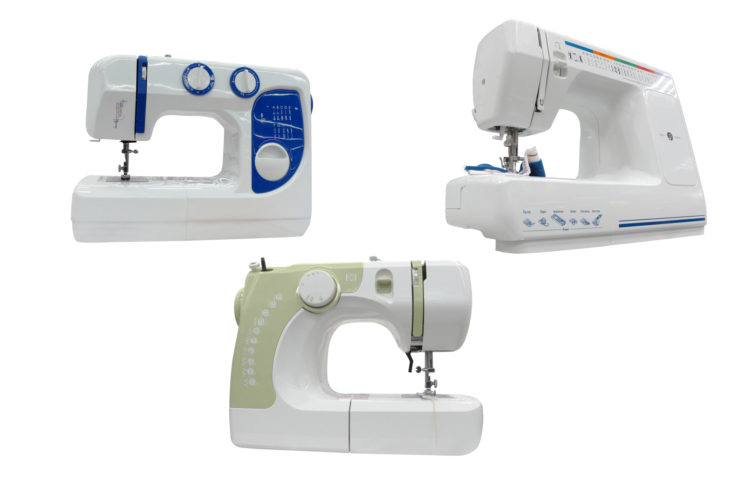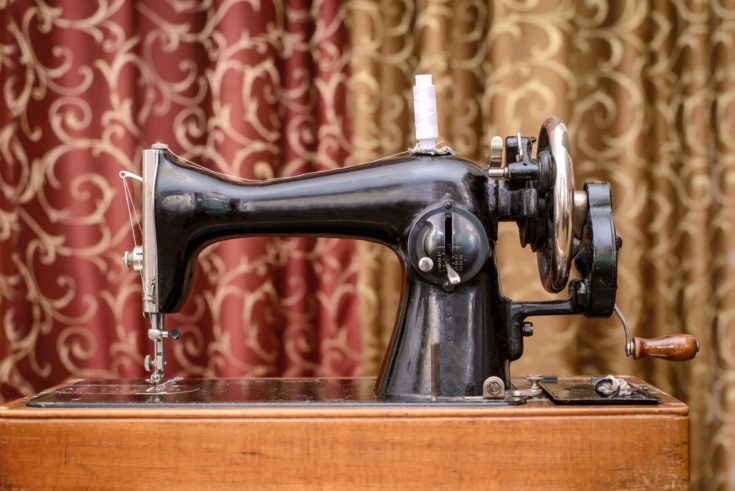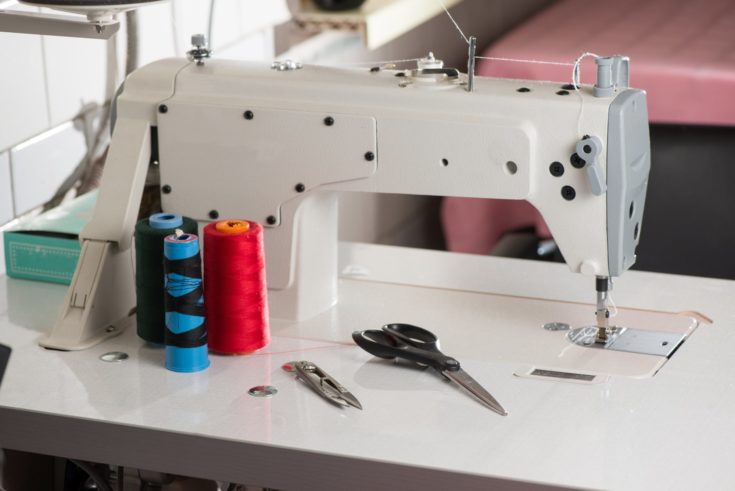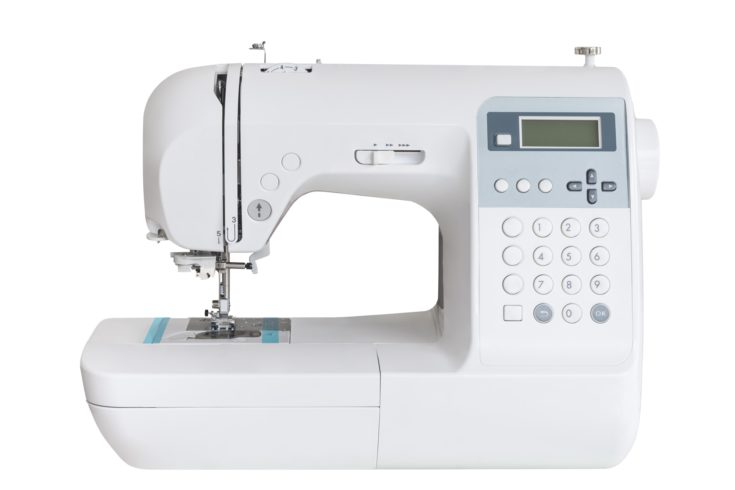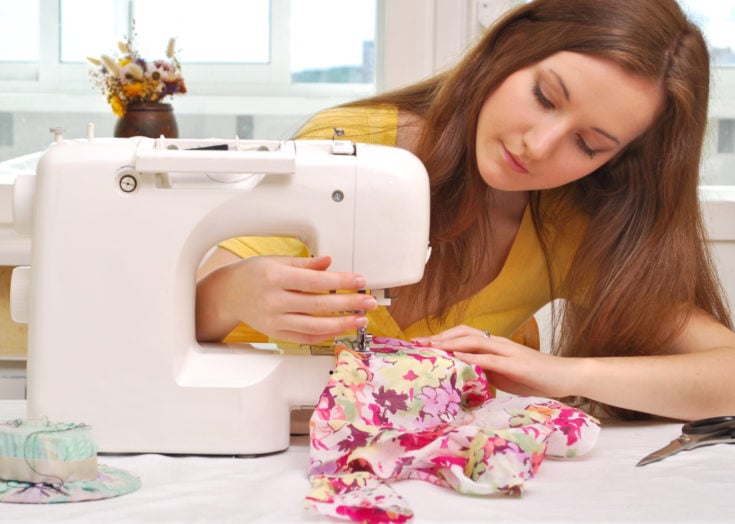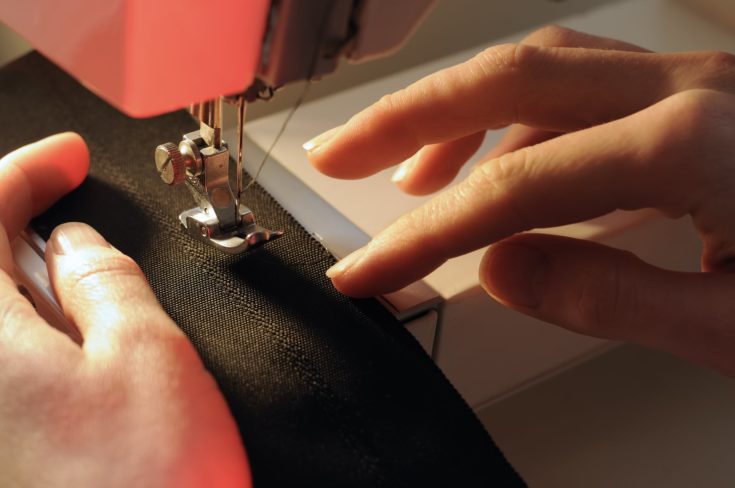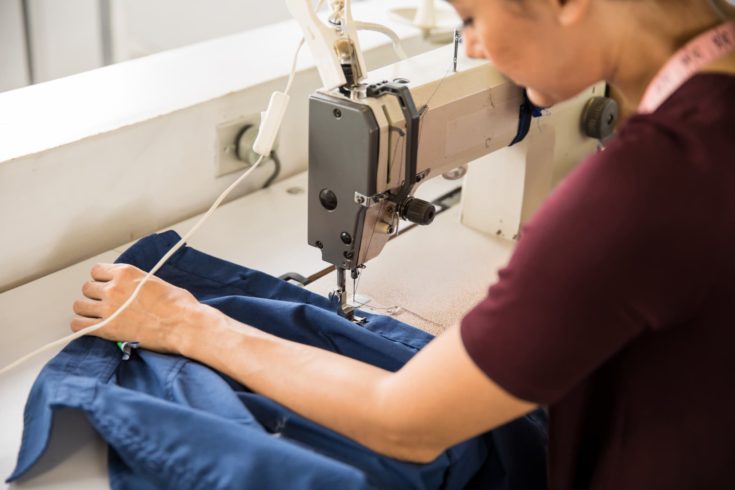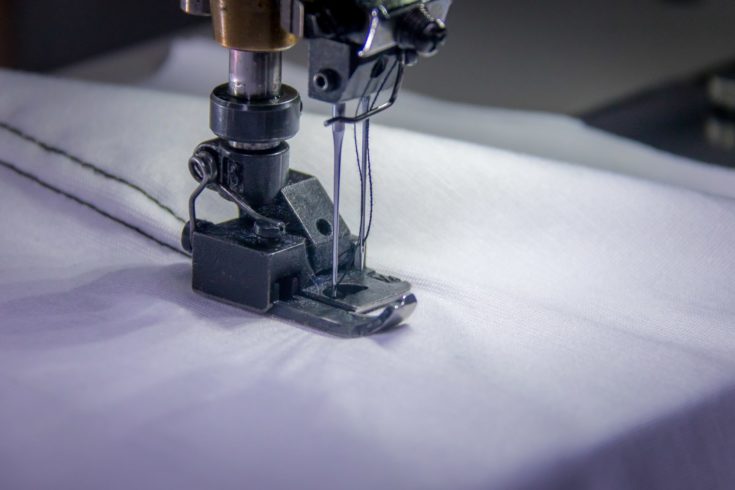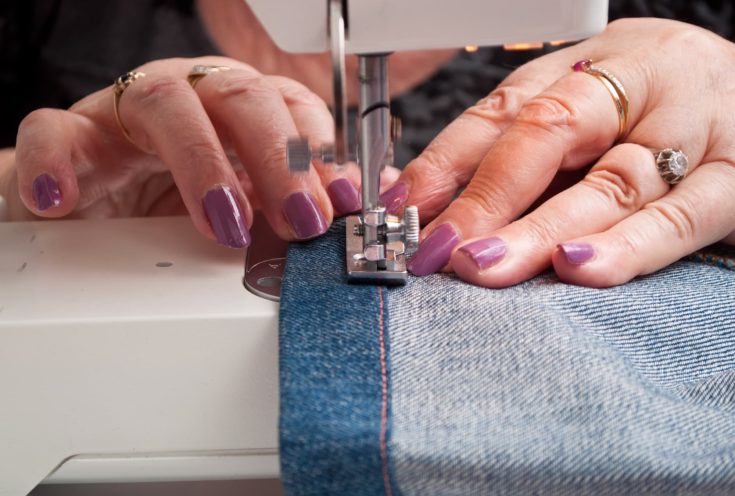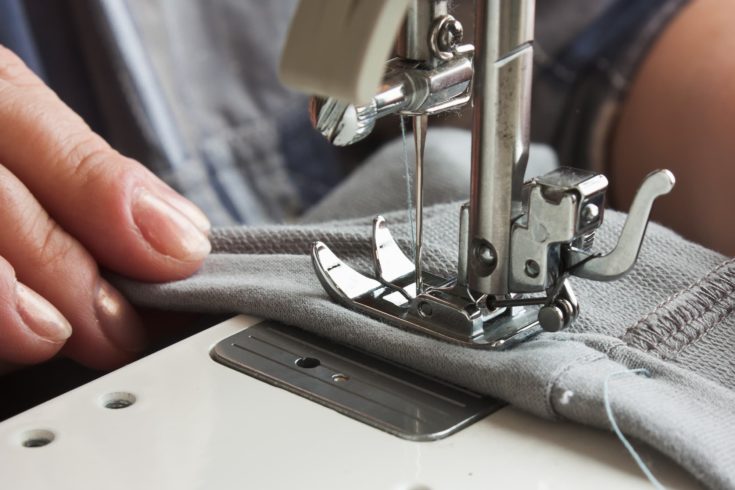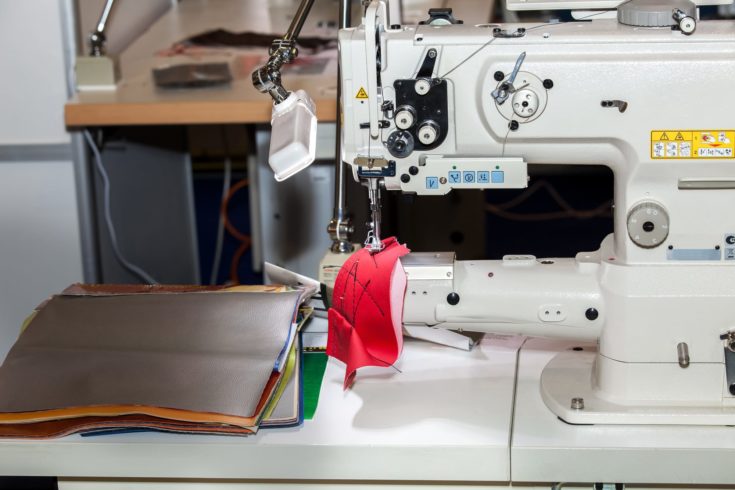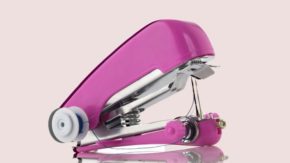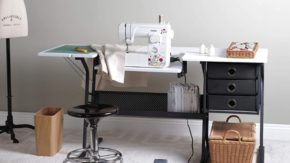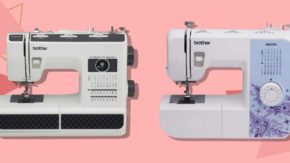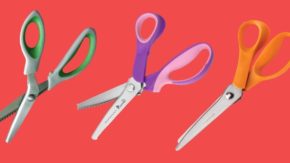If you thought the art of sewing is dead, you’ve got another thing coming. As more and more people are taking an interest in several different crafts and DIY projects, sewing has slowly made a reappearance, and it’s considered one of the most fruitful crafts.
The single largest investment that you’ll have to make if you’re passionate about sewing is a sewing machine. However, it can be really confusing to choose the right one, considering there are so many different types and names that might be confusing to someone who isn’t a sewing guru.
Considerations Before Buying
You will be overwhelmed with how many different features a machine can have, which makes it easy to get lost in the multitude of products if you’ve never had to buy a sewing machine before. But with a little bit of information, you can tell what are the models that best fit your needs as well as how a sewing machine works and all its major parts.
Regardless of all the machine types, we’re about to show you, most machines have two different destinations: for industrial and for home/domestic use. As you can imagine, types of industrial machines are more powerful, have plenty of features, and are designed for companies that make clothes and work with fabrics in bulk. These machines are supposed to be powerful, giving workers the chance to deal with tougher types of fabric at higher speeds.
The best sewing machines that are designed for domestic use aren’t necessarily less powerful, but rather have features that people who are into arts and crafts and making their own clothes might need.
Sewing machines designated for domestic use aren’t that great when you want to sew through fabrics like leather but will do a great job with fabrics like cotton.
Of course, the budget is also important. A professional and industrial machine can cost thousands of dollars, which is a pretty useless investment for regular users that want to be able to make their own occasional shirt.
Some of you might be tempted to buy a machine that offers plenty of stitches. While having many stitches on a machine is neat, most stitches are actually useless (unless you’re into trying decorative stitching). For practical purposes, you’ll mostly need a zigzag or a lockstitch.
Types of Sewing Machines
In order to identify the types of existing sewing machines, we must take into account what are some of their uses. It really depends on how you decide to classify these machines, and that’s why you will find that some articles mention 16 different types, others talk about 20.
For instance, if you were to think only of the automation features, sewing machines would only be of three different types: manual, computerized, and mechanical. However, if you were to consider their purpose, they would be classified as domestic or industrial. So, it really depends on the criteria you set off exploring.
We’ve created a fully comprehensive list of the different types of sewing machines, which is basically reliant on the terminology used in the sewing craft.
Manual Sewing Machines
When you think about manual sewing machines, you probably imagine the world’s oldest model, back when sewing machines were first invented. Hand-operated or manual sewing machines can be spotted from miles away, due to their large handwheels and classic designs. You’d have to turn those wheels all the time if you wanted to operate the machine.
Needless to say, these models aren’t popular anymore, because it takes a lot of effort and time to actually sew clothes with them. But they are, however, more of a collector’s item, and some people will pay a lot of money to own one of these vintage sewing machines.
Manual machines have very little features, which might be enough for someone who is just starting to discover the world of sewing. Even so, there are still some basic automatic machines that are easier to operate, which also makes manual machines obsolete.
This particular type of machine doesn’t require any electricity to run, which eliminates the need for plugs and such. The sad part is, while they’re really good looking, these machines are no longer an efficient way to sew.
Mechanical Sewing Machines
Mechanical models are the upgraded version of the basic manual machine. Just as the name hints at, this machine is made mostly out of metal parts, which makes it heavier and less mobile compared to other machines. In other words, it isn’t really a good option for people who are prioritizing portability in their sewing machine.
Generally speaking, mechanical sewing machines have very limited stitching options. It is typically powered by a foot pedal, but also by a switch that allows you to turn the machine on and off. Mechanical sewing machines generally have knobs that allow people to adjust the width and length of the stitch.
These machines are powered by a single motor which is used to power the belts and gears of the machine. It is typically one of the go-to choices for first-time sewing enthusiasts.
Computerized Sewing Machines
If you were to upgrade your mechanical sewing machines to the next level, you’d probably buy a computerized model. These machines have way more features and come with an LCD panel that will display settings and important information about things like a currently selected stitch.
Since they are richer in functions, computerized sewing machines are also more expensive compared to the previous type. What’s interesting is that, even if mechanical sewing machines are better for beginners because they have fewer features to confuse them and are available at better prices, computerized machines actually streamline the sewing process way better. They can adjust the tension or wind the bobbin automatically, which means fewer headaches for the user. As long as you know how to put a bobbin in a sewing machine.
Some computerized models come with USB ports, so users can make the designs on their computers and then transfer the designs to the sewing machine. That gives advanced users the possibility to create complex and personalized patterns.
While some new sewing enthusiasts prefer investing in a computerized machine from the start, the complexity and number of features might be overwhelming at first.
Electronic Sewing Machines
Electronic sewing machines are often confused with mechanical models. One of the major differences is that electronic machines can be plugged in. Some electronic sewing machines have way more features compared to mechanical models and can even include touchscreens and multiple stitch selections.
These machines also use a foot pedal that users can press in order to give the machine the power it needs to operate. But the most important thing to keep in mind is that what makes an electronic machine is actually the integrated motor that helps it run on electricity.
Overlock Sewing Machines
You might have heard people talk about a serger. This term is actually used to describe an overlocker sewing machine. What sets this apart from other similar products is the fact that they are mostly used for hemming and seaming, due to the fact that they are capable of sewing over the edge of two pieces of fabric.
Serger sewing machines are mostly good for edging and hemming but don’t serve as standalone machines for other types of sewing projects. They are a good investment for people who make a lot of new clothes. Some of the features of serger machines include a built-in thread cutter and the fact that they can run at really high speeds (1,000 to 9,000 rpm).
Lock Stitch Sewing Machines
A lockstitch is the most common type of stitch found in domestic sewing machines. Before passing the thread through the fabric, these machines actually lock two threads together. This adds durability to the seams, which is why plenty of fashion designers and clothes makers prefer to use the lock stitch when creating new items.
Most mechanical sewing machines come with a lock stitch, but there are also machines designed specifically for this type of stitch.
Embroidery Sewing Machines
Once again, embroidery sewing machines can be a standalone product, but it can also be a feature integrated into another type of machine. However, the important thing to remember is that an embroidery machine that’s designed specifically for this purpose will not be able to substitute a sewing machine.
The purpose of these machines is to add a specific design and beautiful details to the fabric. If you’re interested in investing in an embroidery machine, there are a few things to know beforehand:
- Hooping is a process that requires users to place the fabric through a certain hoop with utmost precision and stability. If the fabric does not maintain its position while the machine operates, the embroidery will be uneven.
- Stabilizers are darning feet that are used to hold the fabric in place as well. You might be confused with the variety of stabilizers out there but remember this: some of them go below the fabric, and some of them are placed above.
- Digitizing is a process that involves translating a specific embroidery design into sewing machine-friendly language. With this feature, you can create your own digital embroideries and then transfer them to the machine in order for it to actually recreate the design. This is a very complicated process for people who are not familiar with how computer graphics work.
Buttonholes Sewing Machines
A lot of people don’t know that there is an actual machine that can do buttonholes, although this feature is present in many different machine models. Another interesting fact is that there is quite a variety of different buttonholes, which makes a machine that’s good with this feature even more valuable.
This type of machine is mostly used in industries where clothing manufacturers have to make hundreds of buttonholes in a short timeframe. It’s also characterized by the use of a zig-zag lockstitch or a double chain stitch.
You will find it very difficult to make buttonholes with a machine that doesn’t have this feature or isn’t destined for this purpose, as it is important that the fabric stays firmly in place.
Button Attachment Sewing Machines
Once again, the name of this type of machine is pretty self-explanatory. A button attachment sewing machine works to attach the buttons to the fabric and is specific to the clothes-making industry.
For domestic use, this type of machine or feature isn’t quite necessary, as attaching buttons can also be achieved by using a lockstitch or a chain stitch. The role of this machine is to speed up the process, which doesn’t make such a purchase very common for people who are making clothes for themselves.
Double-Needle Sewing Machines
Machines that are able to make a double stitch are quite common, especially since this stitch is used for decorative purposes all around. However, even if domestic users do have machines with this feature, few of them actually use it.
These types of machines actually have two needles and two bobbins, which work together to create two parallel stitches that can really enhance the beauty of one’s fabrics. The distance between the two stitches can typically be adjusted, but that will depend on the machine model you’re using.
Bar-Tacking Sewing Machines
Bar-tacking is a process that involves multiple stitches which are meant to strengthen the fabric, thus avoiding premature wear and tear. This feature is most common when making zipper flies, to secure pockets on different types of clothing items, to create belt loops, or to strengthen the edges of bedding items.
While there are machines designed particularly for bar-tacking, you can actually achieve a similar stitch with a regular sewing machine. You can get similar results by using a zig-zag or a whip stitch.
Blind Hemming Sewing Machines
When making certain items, you want an invisible hem. To serve that purpose, blind hemming sewing machines were invented. This type of machine will only make a blind hem, which means it can’t serve as a standalone sewing machine for different types of projects.
This type of machine creates stitches by moving the needle from side to side, unlike other stitches that are performed by moving the needle up and down. It actually is the only machine that does that.
And, once again, it is a very specific machine that used to save time in cases where blind hems need to be made on a regular basis. People that try to create blind hem stitches by hand will have a very difficult time in doing so.
The blind hemming machine has a dial that gives you the possibility to adjust the machine’s capacity to grab more or less fabric. When the needle grabs less fabric, the stitch is also less visible. For the best results, blind hemming should be done by matching the color of the thread to the color of the fabric.
Heavy-Duty Sewing Machines
A heavy-duty sewing machine is like the Hercules of the sewing world. It is a powerful unit that’s capable of stitching through rough and thick pieces of fabrics, with needles that are substantially more durable.
What makes these machines truly remarkable is the combination of power and features, as one is capable of replacing multiple individual machines that are designed for specific purposes. Investing in this machine is generally recommended for those who sew for a living, as this is basically an industrial machine.
Coverstitch Sewing Machines
These machines are generally used to make professionally looking stitches, and plenty of the clothes that you find in boutiques use a cover stitch machine. A lot of people wonder why they would need a cover stitch machine when they can use a twin-needle one.
When you rarely make clothes and only for personal use, you probably don’t need a cover stitch machine. However, when you’ve worked with twin needles long enough, you’ve seen some of the downsides, like the fact that they break a lot faster.
Flat Bed Sewing Machines
This type of sewing machine is mostly designed for industrial use. It is characterized by a flat machine base that is used for sewing together flat fabric pieces. These machines are capable of rendering really professional-looking clothing items, as they create quality and good-looking seams.
When you first see them, you probably won’t be able to tell the difference between a flatbed and a regular sewing machine. However, the difference is really noticeable in factors such as the speed of operation.
Post Bed Sewing Machines
The raised bed that’s specific to this type of machine can really come in handy when having to work with three-dimensional items, like hats. These machines are known for their feed dogs and bobbins that rise above the machine’s bed, in a vertical column that can have between 10 and 45 cm.
Cylinder Bed Sewing Machines
Naturally, the bed of this machine is shaped like a cylinder, which makes it easy to tell this type of machine apart from a flatbed one. As you can imagine, this machine comes in handy when you have to sew cylindrical-shaped clothing parts, such as cuffs. They are also excellent in the shoe-making process.
The fabric basically covers the cylinder all around, a cylinder that can vary in diameter and have anywhere between 5 to 16 cm.
Free Arm Sewing Machines
Also known as off-the-arm sewing machines, these are used mostly for shoulder or sleeve seams. They are characters by a horizontal column where you have to feed the material along its axis.
Conclusion
Sewing machines can be classified according to many different criteria, which is what actually leads to an impressive number of sewing machine types. But when you’re looking to buy a sewing machine, you’ll have to prioritize and consider what you’ll be using the machines for.
Naturally, there are machines out there for just about any budget and for all uses, but you’ll want to consider things like:
- Will you be sewing rough and thick or delicate fabrics?
- How much money are you willing to spend?
- How many stitches do you need?
- Is portability an important factor for you?
- Will you need a free arm?
Once you’ve figured out what you want to use the machine for, then you can start investigating the different models available to see which one would suit you best.

